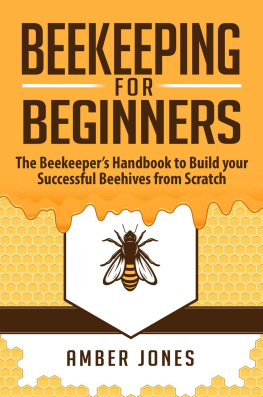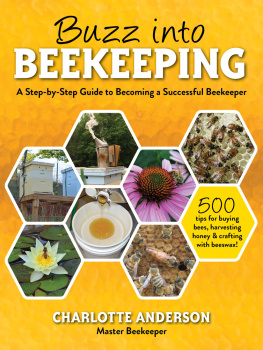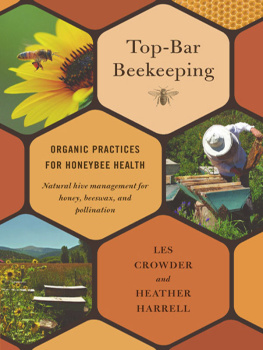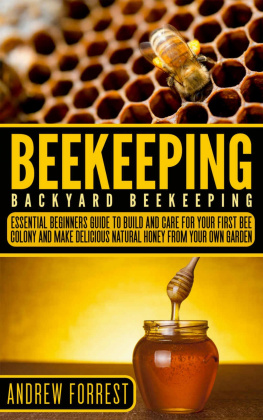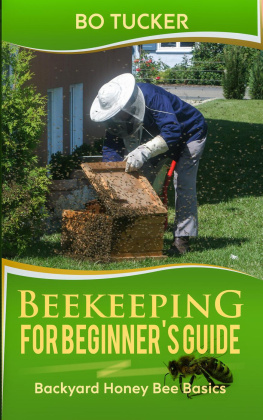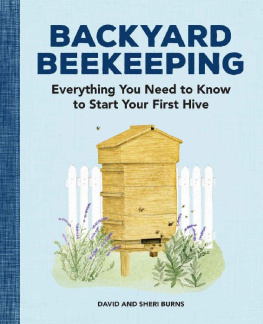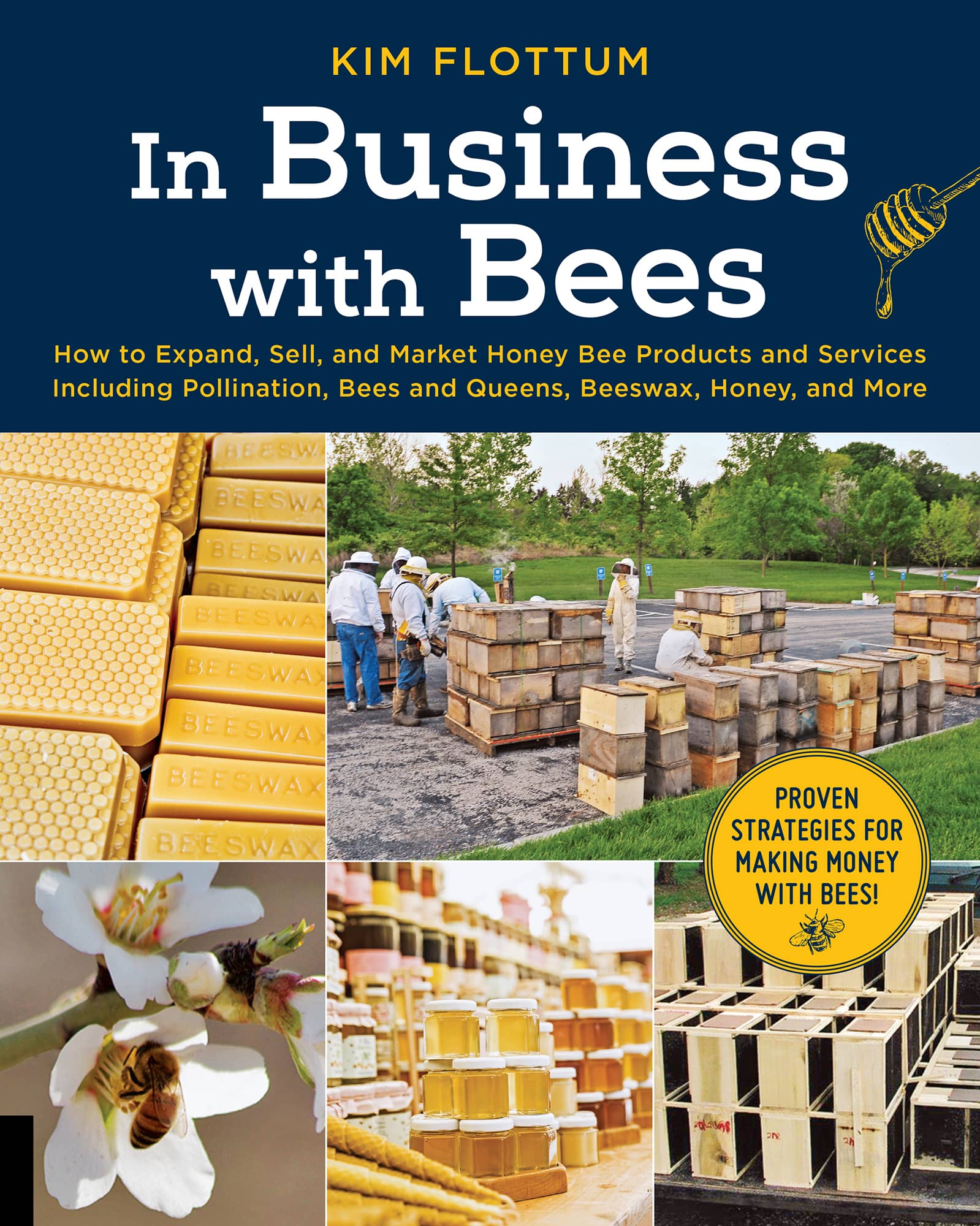In Business with Bees
How to Expand, Sell, and Market Honey Bee Products and Services including Pollination, Bees and Queens, Beeswax, Honey, and More

KIM FLOTTUM

Introduction:
Transforming Your Sideline Operation into a Real Business
N ot so long ago, having a hive or two of honey bees in the backyard seemed like a good idea. Maybe you moved into a new house, so your garden and two apple trees moved, too. Suddenly, it seemed your yardand your lifeneeded bees.
You read all about bees being in trouble, and you heard that the world needed more beekeepers. And if you were a beekeeper, of course, youd have honey and goodies that came from a beehive for your family to enjoy. Those would make great gifts for friends and neighbors. This could work. You could do this.
Maybe the guy at the garden store told you about a local beekeeping class on how to get started. You got some equipment from the store, some bees, and some training. You learned you would have more apples and a better garden, and you found out you could make money selling honey, too.
You took the class, read the book, and participated in a field day. You watched the instructor light the smoker, open the hive, and move frames. She pointed out the queen, brood, drones, workers, honey, pollen, foundation not yet drawn out, burr comb, and propolis. You went home smelling like smoke and thinking, yeah, I can do this.
Then you opened your hive, and two things happened. First, you were hit with the aroma, a wonderful, beautiful mixture of bees, honey, wax, pollen, wood, even a little smoke. It was a complex, alive combination that you will never forget. And you heard the sound. It was quiet, soothing, comfortable, and easy to listen to. This was an incredible moment. Some folks go to a hive and smell the honey. Others, they just get stung. You were smelling the honey. You were hooked.
Fast forward a couple years, and youve gone from two to five colonies. The second year, there was honey. Not much honey, perhaps, but you had to figure out all the ins and outs: removing it; uncapping; borrowing the clubs little extractor; then jar and label and sharing with friends and family. Then there were splits and swarms. Pretty soon, you had just over a dozen hives.
Slow at first, then more.
Your first extractor was too small. Your second was too big. You got a big solar wax melter and went from kitchen knife to cold knife to hot knife pretty quickly. Soon your backyard was too small for all of this, so you found another location not too far away and put some colonies there. After a bit, you learned to grow your own queens, and your IPM Varroa control gave you splits to sell in the spring. A friend offered some pollination work not too far away because he couldnt keep up with it. Then the two of you started buying equipment in bulk for a lower price and selling some to pay for yours.
After you couldnt sell or give away any more honey at work, you set up a self-serve stand inside your garage door that was protected and safe. Then you sold honey at weekly farmers markets in the summer. You discovered that retail makes money but takes time. So when some of the folks in the club began looking to buy local honey, you started selling pails; even though you made less, you invested essentially no time in the sale, which was easier. You were measuring the tradeoff of time versus level of sales.
The first time ever I saw a frame
After a while, you figured out how to balance your time between bees and your day job. Work was steady money, health insurance, and still okay. Bees were good and so was the money. And doing anything with bees was more rewarding than anything else you were doing. You were getting pretty good at making the other products. Honey was a snap, all the wax stuff was good, and you turned down pollination offers every spring. It was comfortable. But now your day job is getting in the way of the time you really want to spend with your beekeeping business. Its time to take the next step and make your bees your full-time job.
So thats what this book is aboutgetting from a comfortable, but unexciting, point A to a point B where you have an independent business. You know what you need to know about beekeepingthis book isnt about that. By this point, you may have 100 or so colonies, you know how much work they take, and you know how much income they can bring in. Your percentage losses each year are in the low 20s, so replacements from splits are still free with some to spare. You know how to make the products, you probably have some experience in marketing, and you deal pretty well with both good and bad customers. All you need to figure out is exactly what your options are for an expanded business, and then how to make it happen. Perhaps youll be expanding your existing sideline, opening a retail store, reselling other peoples honey, or offering education or other professional services. How serious do you want to get with all this, anyway? Lets take a look at what your options are, how to position your new business, how to expand it, and how to promote it.
Farmers markets worked, but it took lots of time.
A self-serve honey stand saves a lot of time.
Growing Your Operation
Package day is in and out, without a lot of support.
T he first thing youll need as you get started with the beekeeping business of your dreams is a solid plan. Start putting together a basic business plan, and take the time to be thorough about each section. It should include
Your business name;
A description of your operation in 250 words or less;
A dozen or so photos, even if they are of empty fields or to-be-repurposed buildings;
A description of your inventory over the seasons;
Who your competition is;
Who your customers are;
What your labor will be, including how many people will be working and, if they are seasonal, their schedules;
Who will be running the place when you are there and when you are not;
Your business structure;
Your attorney and your accountant (who must have agriculture, farm, and government experience);
Profit and loss (P&L) statements based on projections for the first threeideally, fiveyears (see the samples below);
When and at what income you will break even and how much you will need to get started; and
The worst things that could happen to your businessand be honest!and what you would do if they happened.



